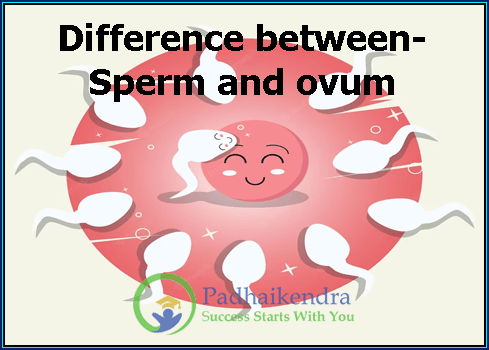Sperm and ovum (or egg) are both gametes, which are reproductive cells involved in sexual reproduction. However, there are several key differences between sperm and ovum:
- Size: Sperm are much smaller than ovum. Sperm typically measure about 0.05 mm in length, while ovum can be up to 0.2 mm in diameter.
- Production: Sperm are produced continuously in the testes of males from puberty until old age. Ovum, on the other hand, are produced only during the reproductive years of females, typically from puberty until menopause.
- Mobility: Sperm are highly mobile and can swim through the female reproductive tract to reach the ovum. Ovum, however, are relatively immobile and are transported through the female reproductive tract by contractions of the uterus and fallopian tubes.
- Quantity: Sperm are produced in large quantities, with millions of sperm cells being released during a single ejaculation. Ovum, on the other hand, are released one at a time, usually once per menstrual cycle.
- Genetic material: Sperm and ovum each contain half of the genetic material required to create a new individual. Sperm carry the father’s genetic material, while ovum carry the mother’s genetic material.
- Lifespan: Sperm have a relatively short lifespan, typically surviving for only a few days within the female reproductive tract. Ovum, on the other hand, can survive for up to 24 hours after being released from the ovary, providing a relatively narrow window for fertilization to occur.





